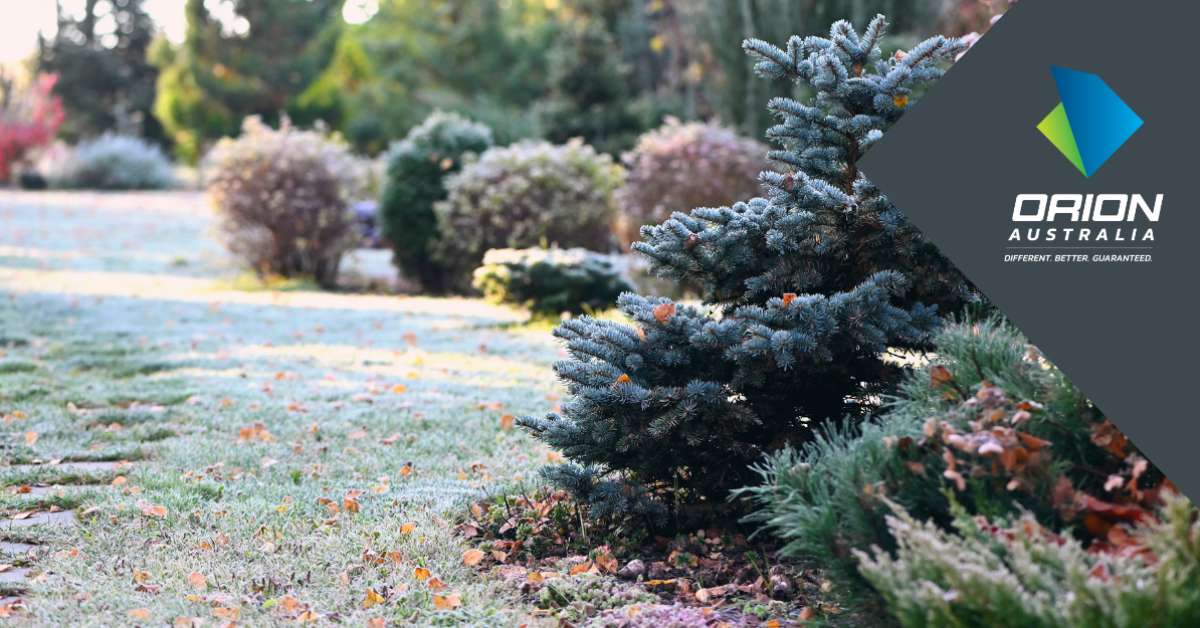13 May 2024
Water Conservation Series – Water Wise Plants for Dry but Cold Climates
In the transition from autumn to the winter months, finding the right plants for dry but cold climates becomes a crucial consideration for many gardeners faced with the two extremes.
As we delve into this topic, let’s explore various strategies and plant options suited to such diverse conditions.

Before diving into planting, consider the following:
- Sun and Shade Patterns: Observe your surroundings throughout the day and across each season. Recognise areas of shade cast by your home and neighbouring structures, as they may affect the impact of frost in a particular area or create a microclimate. Take notice where the sun sets and rises and the areas more prone to frost is also important.
- Utilise Existing Plantings: Established shrubs and trees offer invaluable protection against wind, sunlight, and frost. Take advantage of these or explore alternative varieties within the same species to enhance your garden's resilience.
- Define your Gardening Goals: Determine what you are trying to achieve, whether it be an easy-care garden, wish to cultivate a few select plants, or aspire to create microclimates for those sensitive species.
- Native and Adaptive Species: Consider plants that are indigenous to our local area or those from regions with similar climates. Research what thrives in your area, acknowledging that climate changes may influence plant growth compared to previous decades.
- Ideal planting Time: Late autumn to early spring offers an optimal window for planting, giving your plants the best chance of survival during the summer months.
Preparing for Frost:
- Minimising Cold Weather Impact: Frost damage often occurs when frozen plants are exposed to sunlight. While watering can protect individual plants, it might not be feasible for an entire garden, the hose might even be frozen! Prepare plants, by fertilising with a seaweed fertiliser in the weeks leading up to the wintry weather, avoid over watering or overfeeding from autumn onward.
- Protective Measures: Utilise shade cloth, bubble wrap, woollen blankets or there is special fabric available on the market. Consider growing sensitive species in pots for easier relocation during changing weather.
- Sensible Pruning: Resist removing frost-damaged foliage until spring progresses, minimising the risk of exposing new growth to future frosts
Nurturing Plants in Dry Seasons:
- Deep Watering for Establishment: Water newly planted plants deeply once a week until they establish a good root system.
- Mulching:
Apply mulch around plants, especially around new plantings, to conserve moisture and suppress weed growth.
- Container Gardening: Plants grown in containers even if drought tolerant ones, require more frequent watering. Select pots conducive to each plant needs, considering factors like colour and material.
A Selection of Resilient Plants
- Hellebores (Winter Rose)
- Hemerocallis (Daylily)
- Salvias (Sage)
- Herbs such as Thyme, Rosemary, and Sage
- Cistus (Rock Rose)
- Australian / Tasmanian Natives like Correa, Acacia, Callistemon, Melaleuca, Westringia, Lomandra
- Lavandula (Lavender)
- Veronica (Hebe)
- Buddleia Species (Butterfly Bush)
- Conifer Species
In conclusion, consider plant species that go dormant and are capable of enduring both the cold and arid stretches. Whether establishing a new garden enhancing an existing one, thoughtful soil preparation and the presence of mature plants or trees offer crucial shade and protection. Embrace the challenge of our ever-changing climate by harnessing innovative solutions such as harvesting rainwater in a slimline poly rainwater tank, helping to mitigate water scarcity.
Remember, thorough research before purchasing plants ensures a thriving garden and a more informed gardening journey.


